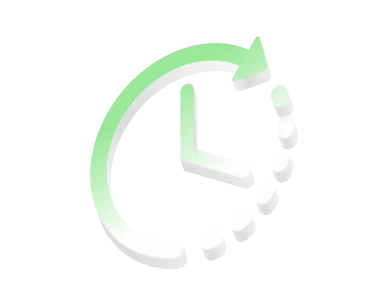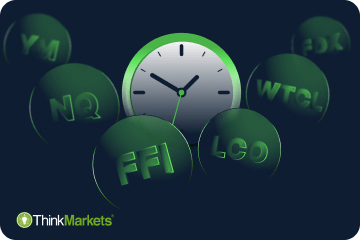Futures
Interested in trading futures? Learn the basics of futures trading and why it’s popular among traders.

Articles (2)

How to trade futures CFDs as an advanced trader
<p>Trading futures contracts for difference (CFDs) can be a highly effective way for experienced traders to diversify their portfolios, manage risk, and leverage advanced strategies for better results.</p> <p>Unlike other financial instruments, futures CFDs allow traders to take advantage of price movements without owning the underlying asset, providing a flexible and accessible avenue for speculation.</p> <p>This article explores advanced futures CFD trading strategies, market analysis techniques, and risk management tactics aimed at seasoned traders.</p> <h2>Understanding futures CFDs: A quick recap</h2> <p>Before diving into advanced strategies, it's essential to briefly recap what futures CFDs are and how they operate.</p> <p>Futures CFDs represent an agreement to exchange the difference in the price of a futures contract from the time the position is opened to when it is closed, without ever owning the underlying asset.</p> <p>By trading CFDs, experienced traders can benefit from price volatility across multiple assets—including indices, commodities, and cryptocurrencies—without the complexities of traditional futures markets, such as settlement procedures or expiry dates.</p> <h2>Leveraging market analysis for trading futures CFDs</h2> <p>Advanced futures CFD trading requires a sophisticated understanding of market analysis. This includes both fundamental and technical analysis, as well as the ability to integrate multiple forms of analysis to form a comprehensive trading strategy.</p> <h3>1. Fundamental analysis</h3> <p>Fundamental analysis for futures CFDs involves monitoring macroeconomic indicators, geopolitical events, and industry-specific news that could impact asset prices.</p> <p>For experienced traders, it is essential to stay informed about central bank policies, economic data releases such as inflation and employment figures, and broader trends affecting the asset you are trading.</p> <p>A critical aspect of advanced fundamental analysis is understanding the interconnectedness between markets. For example, the price of crude oil futures can directly impact currencies of oil-producing nations, such as the Canadian dollar. Recognising these correlations can help traders anticipate market shifts and capitalise on price inefficiencies.</p> <h3>2. Technical analysis</h3> <p>While most traders are familiar with common technical indicators, advanced futures CFD trading involves the use of multiple, layered techniques. Seasoned traders often utilise advanced technical tools, such as:</p> <p><strong>Fibonacci retracement:</strong> Identifying key support and resistance levels where potential price reversals could occur. This is useful in capturing turning points in a highly volatile futures market.</p> <p><strong>Ichimoku Cloud:</strong> An all-in-one indicator that helps identify trends, momentum, and support/resistance areas, giving an overall picture of market conditions at a glance.</p> <p><strong>Volume profile:</strong> Analysing historical volume data to understand how much trading activity occurred at specific price levels, helping to identify accumulation and distribution zones.</p> <p><strong>Relative Strength Index (RSI) divergence:</strong> Using RSI to identify divergences between the price action and the indicator, signalling potential reversals. Divergences can be powerful signals when combined with other indicators for confirming trades.</p> <p><strong>Parabolic SAR:</strong> This indicator is used to identify potential reversals in the market and determine trailing stop levels. Experienced traders often use Parabolic SAR in trending markets to enhance their exit timing.</p> <p><strong>Average Directional Index (ADX):</strong> ADX helps determine the strength of a trend. A rising ADX indicates a strong trend, while a falling ADX indicates weakening momentum. This can be particularly useful when used with trend-following strategies.</p> <p><strong>Donchian Channels:</strong> These channels help identify breakouts by marking the highest high and the lowest low over a given period. Donchian Channels are particularly useful for breakout traders aiming to capture strong price moves.</p> <p>Traders with experience should also be proficient in using multiple time frames to analyse trends.</p> <p>This approach allows you to identify both the larger trend on a daily or weekly chart and finer details on an intraday chart, providing greater insight into market dynamics.</p> <h2>Advanced futures CFD trading strategies</h2> <h3>1. Pairs trading strategy</h3> <p>Pairs trading is a market-neutral strategy that involves taking long and short positions in correlated futures contracts to capitalise on price divergences. This strategy works particularly well in highly correlated commodity futures, such as Brent Crude and WTI Crude oil, or equity indices like the NASDAQ and S&P 500.</p> <p>Experienced traders use statistical tools to measure the correlation between two assets, looking for divergences that can present trading opportunities. The key to successful pairs trading lies in maintaining balance; when one asset underperforms relative to its counterpart, traders can capitalise by taking opposing positions and reaping the benefit of a return to correlation.</p> <h3>2. Spread trading</h3> <p>Spread trading is an advanced strategy involving simultaneous buying and selling of two different futures contracts, usually to benefit from changes in the spread between the two.</p> <p>There are several variations, such as calendar spreads (buying and selling contracts of the same asset with different expiration dates) and inter-commodity spreads (trading related commodities, like corn and soybeans).</p> <p>The goal of spread trading is to benefit from changes in price differences rather than outright price movements. This approach can reduce exposure to overall market volatility, making it a lower-risk, yet effective, method for experienced futures CFD traders.</p> <h3>3. Hedging existing positions</h3> <p>Hedging is a core practice for experienced traders, especially when managing larger portfolios or having exposure to volatile assets.</p> <p>Futures CFDs offer a flexible and cost-effective way to hedge risk. For instance, if you hold a substantial position in crude oil futures, you could use a short CFD position to protect against downside risks, minimising your loss if prices drop.</p> <p>When hedging, traders must be cautious about the size of their CFD positions relative to the asset being hedged. Proper sizing ensures that the hedge protects against adverse market moves without sacrificing too much potential upside.</p> <h3>4. Trend following and breakout strategies</h3> <p>Trend following involves identifying an existing trend and opening positions in the direction of that trend, while breakout strategies focus on price movements past key support or resistance levels.</p> <p>The trick for experienced traders is to use multiple confirmation signals before entering a trade, such as combining Moving Average Convergence Divergence (MACD) with Average Directional Index (ADX) to determine trend strength.</p> <p>Breakout traders may also use tools like Bollinger Bands to identify periods of low volatility that typically precede a breakout, allowing for precise entry points.</p> <h2>Risk management techniques for experienced traders</h2> <p>Risk management becomes even more critical when employing advanced strategies in futures CFD trading. For experienced traders, managing risk involves more than just using stop losses—it requires an integrated approach.</p> <h3>1. Position sizing and leverage management</h3> <p>Futures CFDs are inherently leveraged products, and this leverage can significantly amplify both profits and losses. Position sizing—calculating the correct amount to risk based on your account size and risk tolerance—is crucial. Traders should never risk more than a small percentage of their trading capital on any single trade. Using a fixed ratio for leverage, such as a 2:1 leverage in volatile markets, can help prevent unexpected losses.</p> <h3>2. Dynamic stop loss and take profit</h3> <p>Instead of fixed stop losses and take profit levels, experienced traders might employ dynamic stop losses that adjust based on market volatility. The Average True Range (ATR) indicator can help determine how far to place a stop loss by measuring the volatility of an asset. A dynamic approach allows for more flexibility and prevents trades from being stopped out due to normal price fluctuations.</p> <h3>3. Diversification and correlation management</h3> <p>Diversifying across multiple markets or asset classes can help experienced traders manage exposure effectively. However, it's also vital to understand correlations within your positions. For example, being long on multiple oil-related CFDs may increase risk if all positions move adversely due to a sudden geopolitical development. Maintaining a diversified portfolio, with uncorrelated assets, reduces overall risk.</p> <h2>Trading psychology for advanced traders</h2> <p>The role of psychology in futures CFD trading cannot be understated. Advanced traders understand that emotions like greed, fear, and overconfidence can negatively impact decision-making.</p> <h3>1. Mastering emotional discipline</h3> <p>Trading discipline is essential when it comes to sticking to a pre-defined trading strategy, particularly during periods of high volatility. By setting clear rules for entering and exiting trades, and using tools like automated trading alerts, experienced traders can mitigate the influence of emotions on their trading decisions.</p> <h3>2. Managing cognitive biases</h3> <p>Advanced traders should be aware of cognitive biases, such as recency bias (giving too much weight to recent events) and confirmation bias (favouring information that supports existing beliefs). One way to manage these biases is to maintain a trading journal and regularly review trades to identify patterns of behaviour that may be limiting profitability.</p> <h2>Leveraging technology in futures CFD trading</h2> <p>Technology is a powerful ally for experienced traders, enabling more informed and timely decision-making.</p> <h3>Algorithmic trading and automated systems</h3> <p>Algorithmic trading systems use pre-programmed instructions to execute trades, taking into account variables such as price, volume, and timing. Experienced traders use these systems to enhance efficiency, particularly for executing high-frequency trades or managing multiple positions across different assets.</p> <h3>Advanced charting tools</h3> <p>Sophisticated charting tools are another technological advantage. Platforms like MetaTrader offer customisable charts, allowing traders to apply advanced indicators and overlays to spot patterns and trading opportunities that aren't visible with standard tools.</p> <h3>Economic calendars and real-time alerts</h3> <p>Staying updated on key economic releases is crucial for futures CFD traders. Setting up real-time alerts for macroeconomic events, coupled with economic calendars, can help traders anticipate potential market-moving news and adjust their strategies accordingly.</p> <h2>Maximising success in futures CFD trading</h2> <p>Trading futures CFDs as an experienced trader requires a strategic approach that combines advanced market analysis, sophisticated trading strategies, and robust risk management techniques.</p> <p>By using pairs trading, spread trading, and algorithmic systems, experienced traders can navigate the complexities of the market more effectively.</p> <p>Risk management, position sizing, and controlling emotional responses are essential components of a successful trading journey.</p> <p>For seasoned traders, the ability to integrate multiple strategies—whether technical, fundamental, or technological—is key to maximising earning potential while managing risks effectively.</p> <p>Futures CFDs offer immense opportunities for those willing to approach them with discipline and strategy.</p> <p>As an experienced trader, refining your skills and continually optimising your approach can lead to consistent success in these dynamic markets.</p>

What is futures trading?
<p>Futures trading often plays an important part in many trading strategies. What may seem a complicated concept to beginners helps seasoned traders diversify their portfolios in a new way. In this article, we’ll explain what futures are, how they can benefit you and how you can trade them with ThinkMarkets.</p> <h2>What are futures?</h2> <p>Futures are derivative contracts between a buyer and a seller to exchange an underlying asset at a specified future date at a fixed price. This means that a buyer has the right to buy, and a seller has an obligation to sell. These contracts are traded on their own local or a global futures exchange, governed by regulatory bodies like the Commodity Futures Trading Commission and functioning similarly to a regular stock exchange.<br /> <br /> The most common underlying assets in futures trading are commodities (commodity futures) and indices (financial futures). Futures contracts are especially popular among agriculture and energy producers, letting them lock in and secure the future price of their goods. On the other side of the deal are usually large consumers, such as transportation and food processing companies, as they are equally interested in a fixed price, hoping it will be in their favour.<br /> <br /> Besides participants interested in the actual physical exchange of an underlying commodity, the futures market also has speculative traders interested solely in a cash settlement and not seeking to receive or own the underlying assets.</p> <h2>How do futures work?</h2> <p>Futures contracts usually track the price of an underlying asset closely. For example, here is the price chart of the SPX 500 index (on the left) and SPX index futures contract (on the right):<br /> <br /> <img alt="Picture1-1" src="/getmedia/cb706f28-6941-48c5-9f56-4e4e21a78a9b/WTF_IMG_1.webp" title="Picture1-1.png" /><br /> <br /> As you can see, the price movements are nearly identical. This happens because the price of futures is essentially a speculation of traders based on the current market (spot) price. It may sound very familiar to you if you know how CFD trading works. Futures and CFD trading are indeed very similar; however, there are also significant differences.</p> <h3>Futures vs CFDs</h3> <p>It is possible to trade on futures exchanges directly and gain exposure to commodities. However, it is more complicated to open a futures trading account, and the trading costs are higher, as are the margin requirements. Instead, the typical retail trader will opt for CFD trading, as CFDs follow the underlying futures but avoid some of the complexities. <br /> <br /> <img alt="Image2" src="/getmedia/63fa0502-e729-4795-bdcf-3066a09225d2/WTF_IMG_2.webp" title="Image2-1.png" /></p> <h3>Futures and CFDs differences</h3> <p><br /> <strong>Contract size</strong><br /> To facilitate futures trading, every contract is standardised to a set quantity known as a lot. For example, a standard oil futures contract, such as WTI crude on the NYMEX, is for 1,000 barrels, while a standard gold futures contract on the COMEX is for 100 troy ounces. CFD brokers will create their own “lot”, and it is usually smaller than the exchange lot to allow investors with small amount of capital to gain access to the markets.</p> <p><br /> <strong>Expiry date</strong><br /> Futures contracts always have an expiration date. Upon expiration, a futures contract is closed, and you take the delivery of the commodity or need to supply it if you are short. The CFD contract is usually closed just before the expiration date to avoid taking delivery of the product, but this also means realising a profit or loss on the trade.There is no additional fee for holding a futures contract open all the way until its expiration date. With CFDs, traders are charged a fixed swap fee to hold their position overnight.<br /> <br /> <strong>Range of markets</strong><br /> Futures are mostly traded on commodities and indices. Other markets can be traded with futures too, but they are not as popular and, as a result, less liquid. CFDs are widely traded on any market – forex, indices, commodities, crypto, stocks, ETFs and even futures themselves.</p> <h2>Futures trading with CFDs</h2> <p>As we have established, both futures and CFDs are derivative contracts, where the former tracks future price expectations within a set timeframe, and the latter tracks the future’s price. These two prices move independently, although in coherence.</p> <h2>Why trade futures with CFDs?</h2> <h3>No physical exchange required</h3> <p>In regular futures trading, buyers and sellers are obliged to exchange the underlying asset upon the contract expiration or settle (close) the contract before it expires to prevent it. Trading futures with CFDs does not imply any ownership.</p> <h3>No swap fees</h3> <p>Unlike CFDs on all other financial markets, CFDs on futures do not have swap fees and can be held open throughout the duration of the contract with no overnight charges.</p> <h3>No hidden fees</h3> <p>Futures trading usually comes with commission, exchange, regulatory or insurance fees set by a broker. When you trade futures CFDs with ThinkMarkets, there are no extra fees.</p> <h3>Hedging</h3> <p>CFDs on futures can be an excellent tool to reduce the risk of CFD positions on other instruments. For example, if you happen to have an unsuccessful CFD trade on the SPX500 index, you can open a position in the opposite direction on the SPX 500 futures contract.<br /> <br /> Keep in mind that futures contracts on any financial instrument have their own ticker symbols. When you trade a CFD on the S&P 500 index, the ticker symbol is SPX 500, and when you trade a CFD on S&P 500 futures contract, its ticker symbol is ES*3. This may vary from broker to broker. Check out our <a href="/en/contract-specifications">Contract specification page</a> to see ticker symbols of futures offered by ThinkMarkets, along with their respective contract sizes, leverage and expiration dates.</p> <h2>How to trade futures with CFDs</h2> <p>When you trade futures contracts with CFDs, all you need to do is predict the direction of the futures price movement and open a buy or sell position accordingly. Let's see how it works on the SPX 500 futures (ES*3) example, trading at USD 4,140 at the moment of writing.<br /> <br /> If you think the price will increase, you open a buy position or go long. If your prediction is correct and the price moves to USD 4,150, you get USD 10 profit. If the price moves against your prediction and drops to USD 4,130, you acquire a USD 10 loss.<br /> <br /> <img alt="Image3" src="/getmedia/ae80043b-40be-44e0-990a-52d7188ee4ef/WTF_IMG_3.webp" title="Image3-1.png" /><br /> <br /> If you think the price will go down, you open a sell position or go short. If the price drops to USD 4,130, you get a USD 10 profit. Should it go up to USD 4,150 instead, the USD 10 is your loss.<br /> <br /> <img alt="Image4" src="/getmedia/c0c2687a-db42-4133-86aa-510fe788a759/WTF_IMG_4.webp" title="Image4-1.png" /><br /> <br /> It is very important to remember that both futures and CFDs are traded with leverage; hence futures CFDs are leveraged instruments too.<br /> <br /> This means that to open the position we described above, you only need to put down a margin amount instead of the full price of USD 4,140. It also means that your potential profit (as well as a potential loss) will be multiplied. That's why it's crucial to use <a href="/en/trading-academy/cfds/risk-management-tools-in-cfd-trading">risk management tools</a>, such as stop loss and take profit to prevent bigger than expected losses or lock in profits.<br /> <br /> If you are not sure how to use them or just want to sharpen your futures trading skills, go ahead and <a href="/en/demo-account">create a demo account</a> on the MT4 or MT5 platforms, where you can practise trading with virtual funds in a simulated risk-free market environment.</p>